Affiliate disclosure: This post may contain affiliate links. Please see our Privacy Policy.
Yarrow grows just about everywhere in the summertime, and it’s an easy to forage herb that’s the perfect addition to natural facial soap.
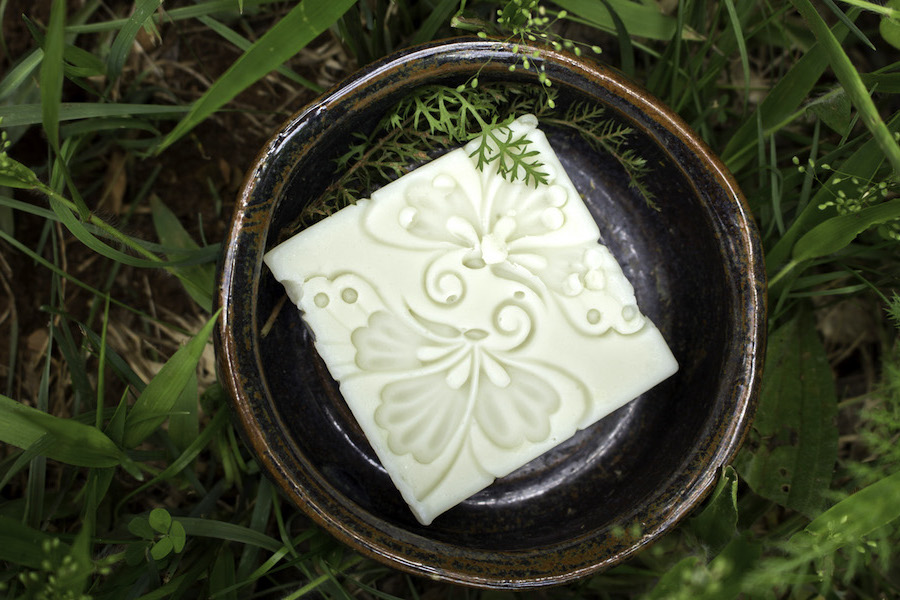
Yarrow is one of my favorite herbs to spot in the summertime. As a young herbalist, I remember reading about all the wonderful things this herb could do, but I happened to be growing up in the Mojave desert, one of the few places in the US where yarrow doesn’t grow. I couldn’t wait to find it, this herb that grows like a weed everywhere…or everywhere except where I lived.
Now that I live in Vermont, I can truly appreciate how common yarrow is in the wild, but I still get excited whenever I see a patch. (Here’s how to identify yarrow in the wild.) Anything yarrow makes my heart start to flutter a bit, remembering back to my young self and the passion I had for this particular plant in my youth.
When I saw this recipe for yarrow and witch hazel soap in the Nerdy Farm Wife’s Natural Facial Soaps book I sent her a note and asked permission to reprint it. Just one more way to spread the yarrow love!
(If you’re a first-time soap maker, I recommend reading this primer on how to make soap before you get started.)
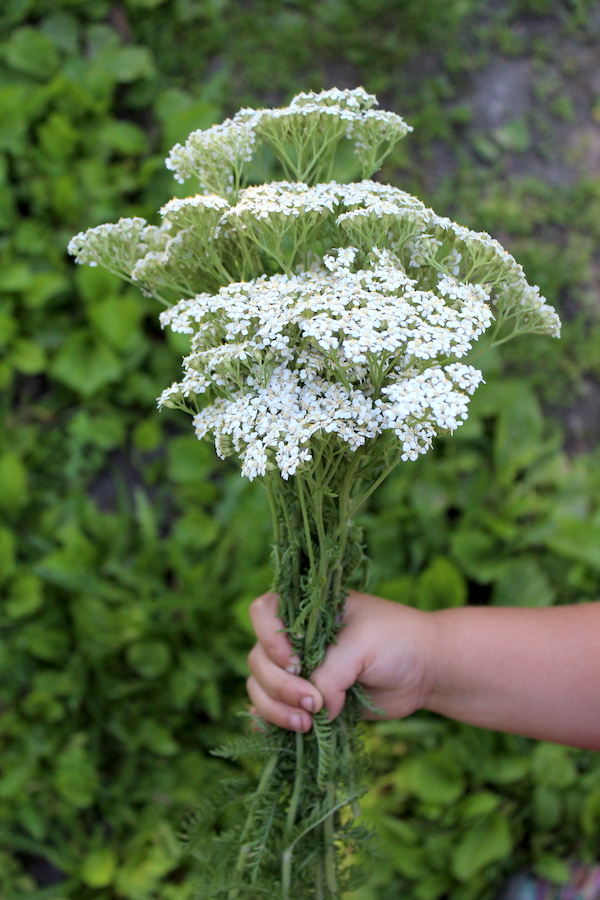
Benefits of Yarrow Soap
Witch hazel is a natural astringent, and it’s commonly used to treat acne, but what about yarrow? Why would you put yarrow in a homemade soap?
According to Learning Herbs, it’s one of the 10 best herbs to use in soaps. They note that “While yarrow is often used internally, it is also used topically to fight against inflammation and help heal wounds faster due to its antibacterial and antiseptic properties. This makes it great for acne, eczema, and other skin conditions. Yarrow has tiny white flowers that can be dried and used on top or within soap. Leaves and flowers can be used in an herbal oil infusion and/or tea for the lye water in your soap recipe.”
This recipe, in particular, has you make a yarrow tea before you start, and that yarrow tea is added as part of the lye/water solution. You can also infuse the yarrow into the liquid oils in this recipe, straining it out before making the soap.
It takes a few weeks for yarrow to infuse into oils, so making a tea is a quicker method. The tea method also works well with either dried or fresh yarrow, while the infused oil method is best made with dried yarrow.
Wild Foraged Soapmaking Resources
Jan has a number of different soapmaking books, which walk you through everything you need to know to get started. I particularly love how she incorporates wild ingredients into her natural soaps, allowing you to bring nature into your home in yet another place…the shower.
Her natural soapmaking ebook collection even includes a recipe for mushroom soap. I think it’d be lovely with some of our homegrown shiitake mushrooms, or maybe better yet, a few wild foraged reishi mushrooms.
If you’re confused about where to start, you can also read her Soapmaking 101 article for pointers.
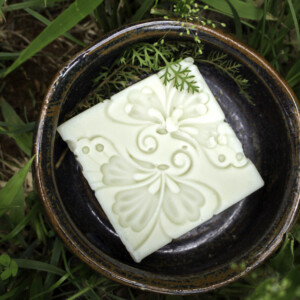
Yarrow and Witch Hazel Soap
Equipment
- Large Bowls
- Soap Mold for Shaping
Ingredients
Oils & Butters
- 13.5 oz 383 g olive oil
- 6.5 oz 184 g babassu oil
- 3.5 oz 99 g safflower oil
- 2.5 oz 71 g hemp oil
- 2 oz 57 g castor oil
Lye Solution
- 3.84 oz 109 g sodium hydroxide (NaOH)
- 7.25 oz 206 g chilled yarrow tea
Extras
Instructions
- To make the yarrow tea place 1⁄4 cup dried yarrow (or 1⁄2 cup fresh yarrow) in a jar, pour 1 cup simmering water over. Steep 30 minutes to 1 hour, strain and then chill completely before using in recipe.
- Put on protective clothing, eyewear and gloves before carefully stirring lye into the yarrow tea until dissolved. Set the solution aside to cool to between 100 and 110 degrees.
- While the lye solution cools, gently warm the oils to around 100 to 110 degrees so that the two mixtures are close in temperature.
- When both solutions are between 100 and 110 degrees. Pour the cooled lye solution into the warmed oils. Use an immersion blender to stir the batter until it thickens or achieves “trace.” This is when soap dripped back into the pot leaves a visible “trace” on the surface.
- Blend the witch hazel into the soap once you reach light trace. Be sure that it’s blended in well, to avoid separation.
- Pour the soap batter into a prepared mold and cure the soap for a few days until it can be easily removed from the mold. Slice the soap and cure for about 4 weeks to allow extra moisture to evaporate out before using.
Notes
Soapmaking Tutorials
Looking for more soap recipes and tutorials to keep you crafting?
- Common Soapmaking Mistakes (and How to Avoid Them)
- How to Make Melt and Pour Soap
- Easy Goats Milk & Honey Melt and Pour Soap
- Goats Milk & Honey Soap Recipe for Beginners
- Breastmilk Soap
- Gardener’s Hand Soap Recipe
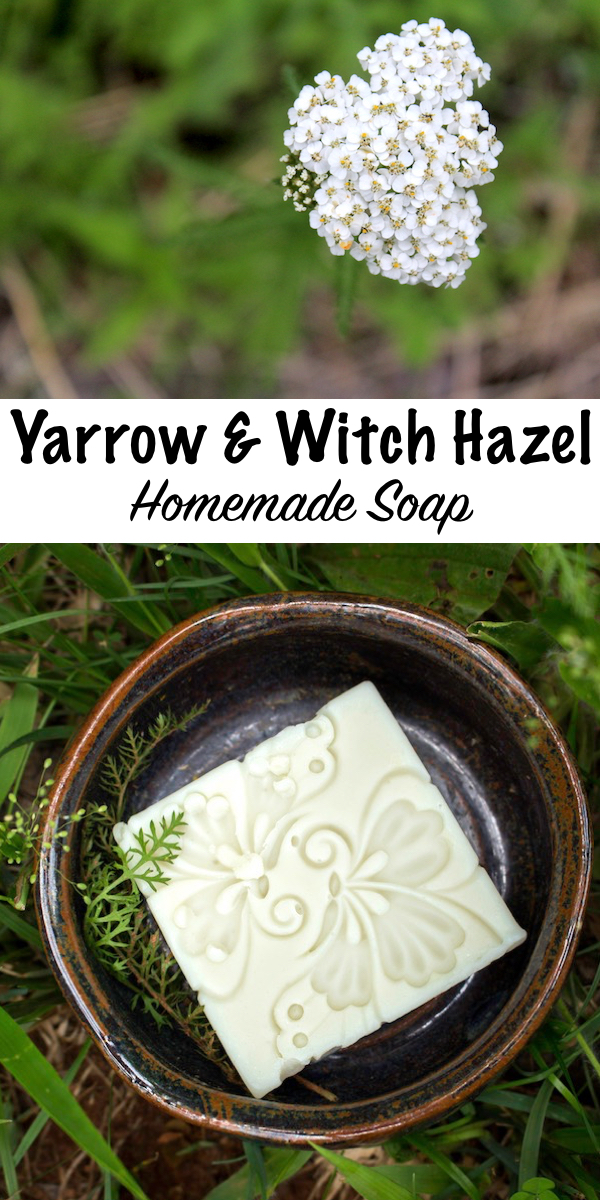
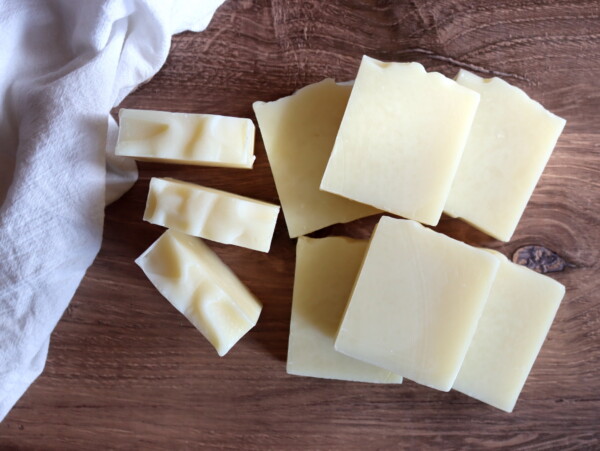
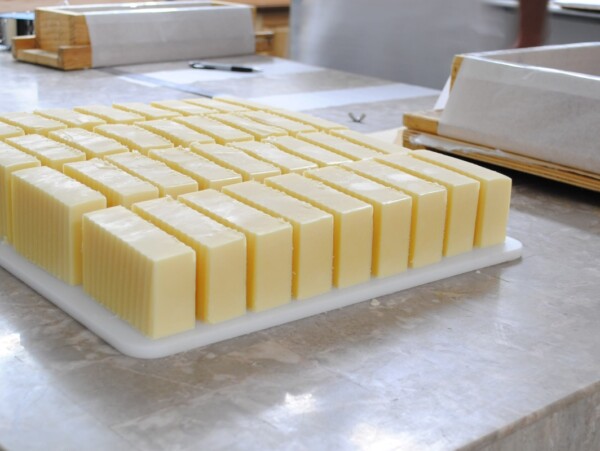
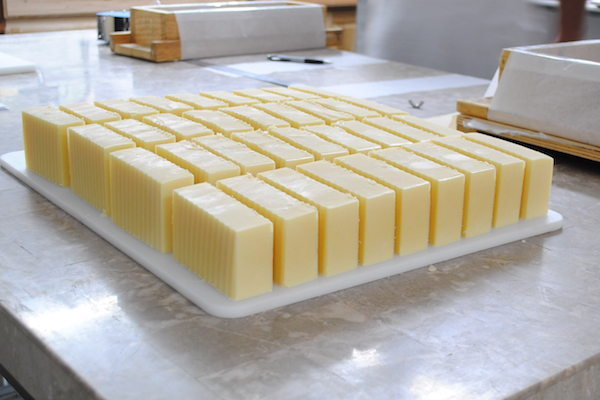
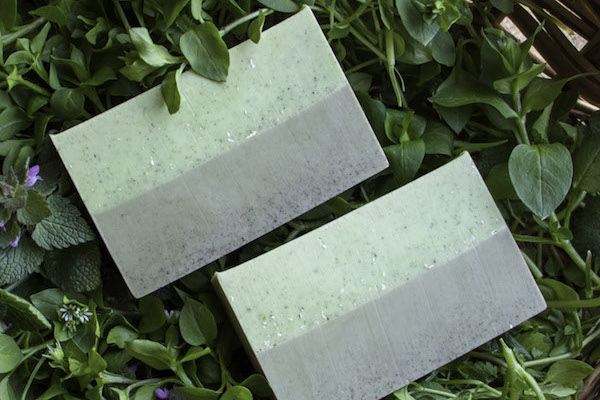
Can you incorporate tallow into this recipe? Wasn’t sure if you can substitute the tallow for 1 or more of the oils or add tallow and reduce the amount of oil?
You can make substitutions to soap recipes based on your personal preferences. You want to be aware of the different properties that each oil carries so that you’re choosing an appropriate substitution. You also want to learn how to use a lye calculator to determine whether or not you need to change the lye amount in the recipe.
My daughter and I make Hot Process soap. Would this recipe work for HP?
Yes, this recipe will work fine for hot process. You may just need to check the water discount and adjust accordingly.
Hey, I seem to keep reading that for cold process less than 10% castor oil is a good value, otherwise the soap becomes sticky. So all that glide and stable lather get’s too much. Is it because of the other oils that you are using that makes ths work? (at a higher value)
I have been thinking up a recipe for witch hazel soap, with an arnica infusion. I was considering hemp seed oil and olive oil, but have also been considering jojoba and castor oil to help balance out and improve lather. I didn’t now whether to go high with the hemp seed between 10% or closer to half with the olive oil and my main concern with the castor oil was the scent, although my suspicion is the scent will be buried in the hemp seed oil. Do you have any tips on how to keep the witch hazel scent in the soap? which I love. Or do you have any pointers for the recipe? your soap looks beautiful
This recipe was written by Jan Berry at The Nerdy Farm Wife. She is a highly experienced soapmaker and has shared that she has used castor oil up to 15% without it being sticky. It probably depends on the other oils that are used in the recipe. Each oil has its own properties which will lend different qualities to the finished soap. I use castor oil on a regular basis in my shampoo bars and have never experienced an unpleasant scent from the castor oil. It is recommended to use up to or around 15% of hemp oil in your soap so I definitely think 50% is too high. I don’t know of a way to get the witch hazel scent to come across any stronger in the soap. The high temperatures in the soapmaking process make it very difficult for some scents to come through.
Ashley,
I would like to buy some bath soap/ bars, body wash etc
With WITCH HAZEL To get rid of “ old man smell.”
Do you sell such soap? If not, who does?
Thx
Alfredo
We actually use Dr. Bronner’s Tea Tree soap bars in my household and it’s great. You can get it here: https://amzn.to/37hknSV
Thank you for sharing this recipe! It’s the first CP recipe I’ve found that doesn’t call for fragrance or essential oils. How is the scent? Does the scent of the yarrow come through at all? Or is the yarrow simply for benefitting the skin?
When making the yarrow tea, what parts do I use? The flowers only or half stem and leaves and half flowers?
For soap, you can use any part of the plant as all of it contains the active compounds you’re extracting for this soap. (For drinking, people tend to only use the flowers because they have better flavor.)
Where did you get such a beautiful soap mold?
Good question! The soap mold used for this one can be found here. There are a bunch of other great butterfly themed ones too, all here.